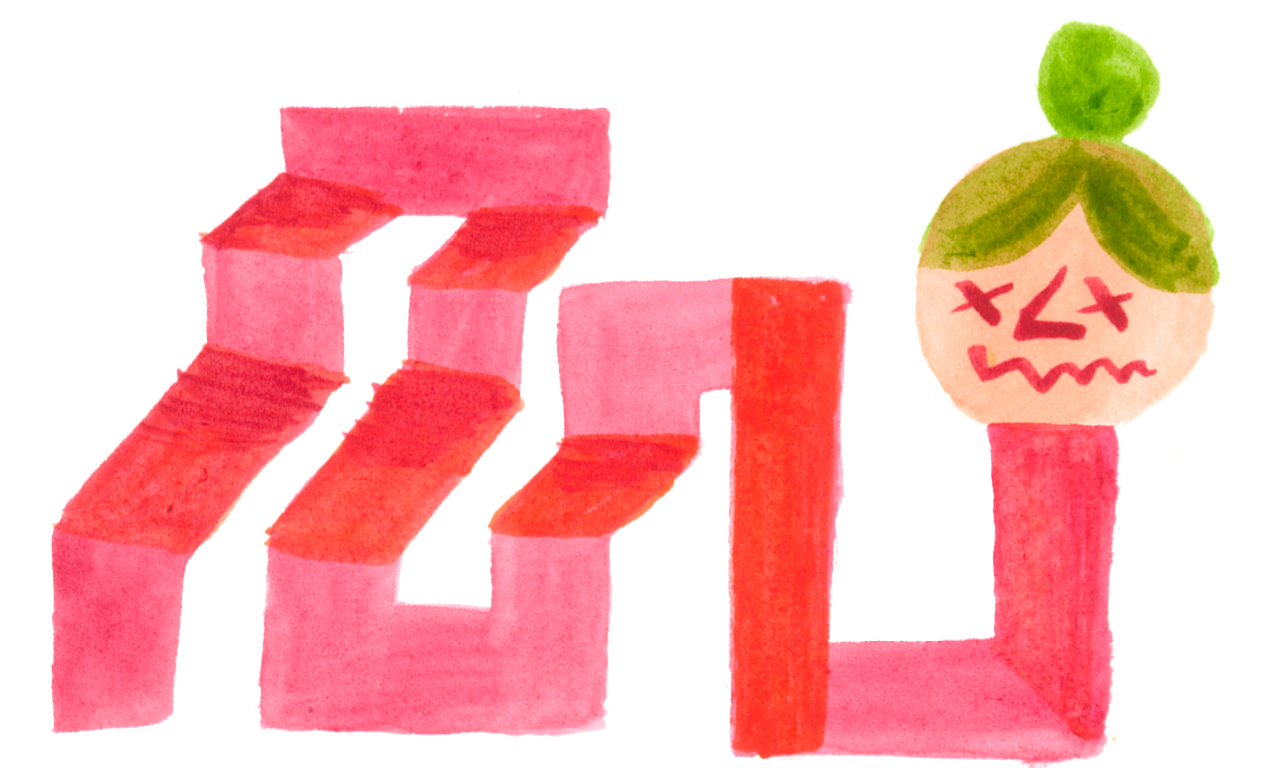I don’t think I can describe the desire behind making these films any better than I did in a 1988 conversation with Sylvère Lotringer, published by a friend, Leo Edelstein in his magazine Pataphysics at a time when no one was interested. I had not yet started writing, and the desire behind them – to escape from unhappiness (i.e., a surfeit of emotion and content) into happiness (i.e., a clarity or form in which all these fragments of feeling and thought could be magically held) was still fresh. The desire was never fully resolved but I hadn’t abandoned it yet.
 Visiting graduate art programmes in Europe and London this year I was surprised by how many women I met who are still making these kinds of films, films that can be described as experimental, DIY, personal, poetic, abject. The technology’s changed but the impulse to create this kind of order – delirious, dreamy, romantic, paradoxical, fraught – is still compelling. A terrible megalomania, an insistence on being present – even when one has no personal presence – through one’s double, the film. Gripped by extreme sensitivity, atmosphere’s everything. The background becomes foreground. An externalization: cutting instead of cutting. Much as I loathe the idea of a feminine écriture, I have to admit that the impulse to do this seems very female. Barbara Rubin a patron saint of this kind of film . . . fifteen-year-old girl given a Bolex transforms her isolate misery into Christmas on Earth.
Visiting graduate art programmes in Europe and London this year I was surprised by how many women I met who are still making these kinds of films, films that can be described as experimental, DIY, personal, poetic, abject. The technology’s changed but the impulse to create this kind of order – delirious, dreamy, romantic, paradoxical, fraught – is still compelling. A terrible megalomania, an insistence on being present – even when one has no personal presence – through one’s double, the film. Gripped by extreme sensitivity, atmosphere’s everything. The background becomes foreground. An externalization: cutting instead of cutting. Much as I loathe the idea of a feminine écriture, I have to admit that the impulse to do this seems very female. Barbara Rubin a patron saint of this kind of film . . . fifteen-year-old girl given a Bolex transforms her isolate misery into Christmas on Earth.
Films that impressed me this winter: Ruth Novaczek’s Episode, Sense and Alibi – short epics composed of old and found footage held together by Novaczek’s voice . . . Bereft winter landscapes and secrets – my clothes were all wrong – composed like a pop song; the terror you feel when everything’s moving a fraction too fast. Lucy Pawlak’s The Inspection House (Training for the Family in How to Act) – a feature-length pageant in which four performers masked in facial prosthetics – deranged hobbits all – enact the small cruelties encouraged in acting schools. Even with the relative cheapness and ease afforded by digital video production, these films are heroic achievements, mobilizing equipment and people for days and weeks at a time . . . attempts to encapsulate the whole world in this dinky form. ‘Always do,’ Simone Weil wrote, ‘what will cost you the most.’
In Sheila Heti’s novel How Should a Person Be?, the painter Margaux, depressed and grasping at straws, decides to make this kind of movie: ‘I suddenly knew,’ she confides, ‘what I had to do to get rid of my bad feelings – not speak less but speak more, and not through you, but through myself. I had to try even harder for meaning. It was finally time to. I would make a movie . . . So I started filming, you know, using everything I had. Next I’ll put the scenes in some kind of instinctual order . . . Am I retarded? Am I retarded? Am I retarded?’ Margaux concludes. ‘I hate power,’ the young Bernadette Mayer wrote in Studying Hunger, ‘except the power I have to show you something.’
I began making films when Ruth Maleczech, who I’d studied acting with for three or four years, looked at me and said: ‘I don’t think acting’s for you. I think you should make movies.’ She told me to watch Michael Snow’s Wavelength. I did. Watching Snow’s hour-long single-shot film – a slow zoom onto a couple inside a room – blew me away. By turns sombre and giddy, Snow’s film was a high joke, an ontological koan. It occurred to me that instead of repressing my analytical bent as an actress I could make movies, i.e., turn my head inside out and reveal thought without ever speaking.
When I viewed the two rolls on a borrowed Super 8 viewer I felt nauseous and giddy. This was it.
I borrowed a Super 8 camera and began shooting film on a trip home to New Zealand that summer. Each three-minute roll cost about $20 with processing. I had no ideas except for using the camera to say what I couldn’t. Revisiting scenes of an adolescent psychosis, I walked through a large park and aimed the camera up towards some trees. The leaves on the branches were dense and the light moved very fast. When I viewed the two rolls on a borrowed Super 8 viewer I felt nauseous and giddy. This was it.
Making the lm took a long time. It took months to discover its subject (nostalgia vs memory; how not to get lost in the past) and months more to discover its form: a battle between words and pictures that began when I asked a philosopher friend, Irene Crofton, to write a text on this topic. I remember shooting words on an ancient word-processor in single-frame animation and being gripped by a certainty, then, that I had to bring twelve people to an abandoned hotel in the Catskills to act out King Lear. This idea struck me as either great or self-indulgent. I had already stopped topless dancing, was working in law firms for $12 an hour and every two hours of work equalled six minutes of film stock and processing alone. I borrowed $300 and the film was finally finished one summer, strips of Super 8 film cut, labelled, and draped over every available surface of my apartment.
In subsequent years my life became somewhat less marginal but my approach to making these films did not. They were rarely exhibited during the years they were made.
These films have nothing to do with me now. Their exhibition comes too late to feel like a vindication. Nevertheless it’s a pleasure – an abstract a affirmation of a practice I’m no longer involved in but will never recant . . . emotional science, the giddy revenge of the ageless un-gendered young woman.

